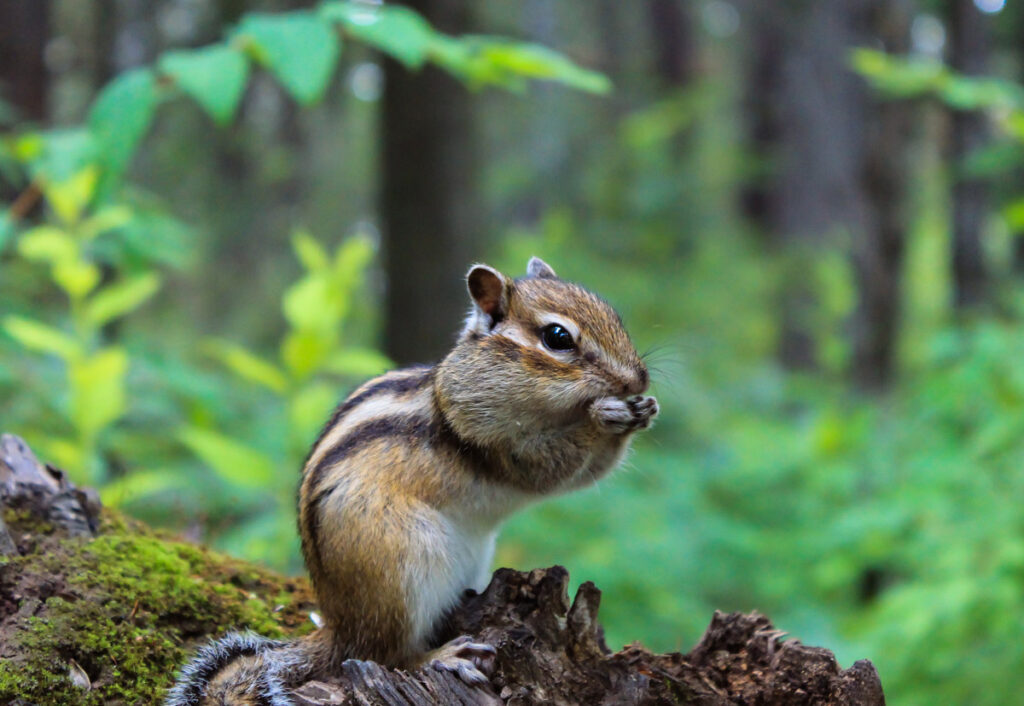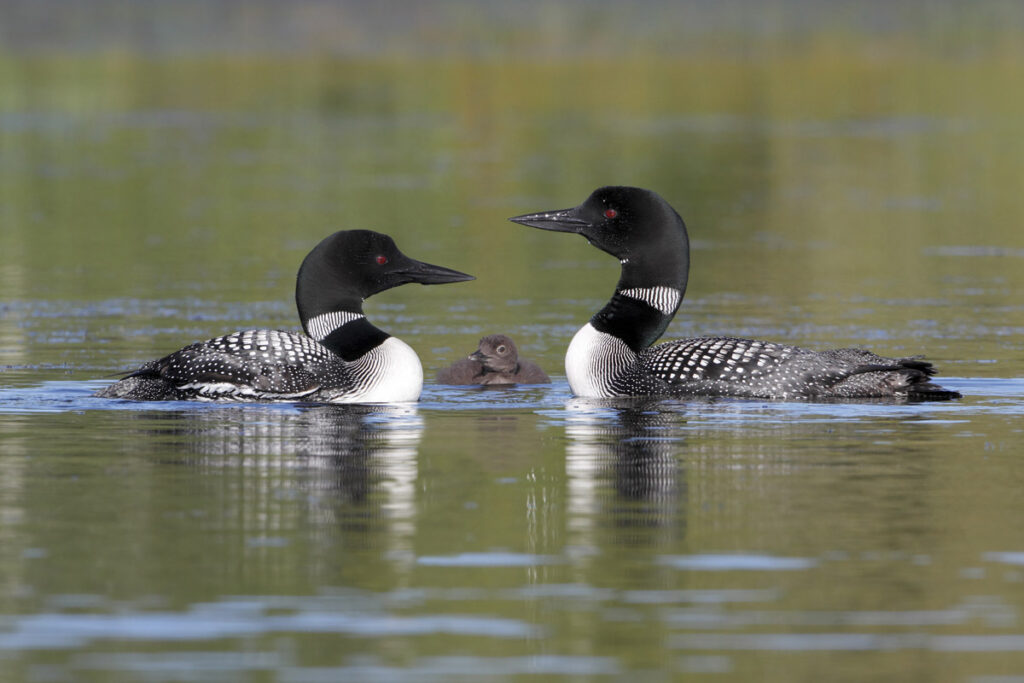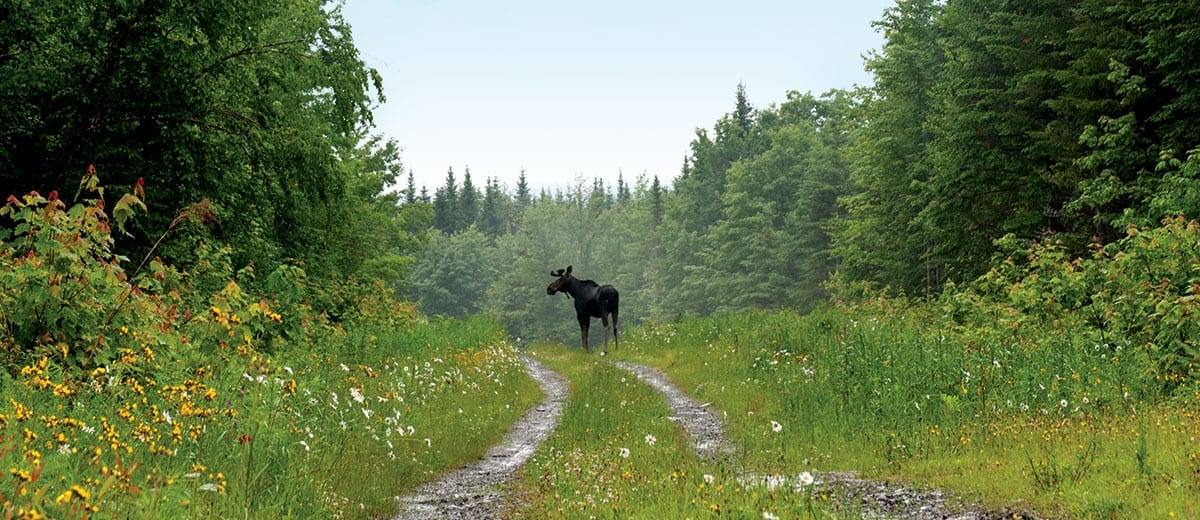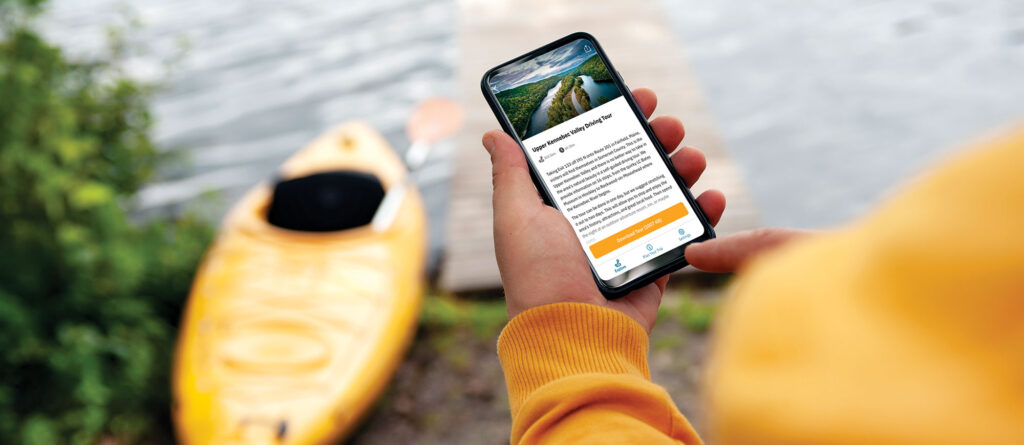Wildlife Watching
Spot everything from moose to squirrel
Wildlife watching can be as simple as grabbing a pair of binoculars and heading outside to the woods, a park, or along a riverwalk. While we make no promises, there are many chances here in Maine’s Kennebec Valley to spot various birds and animals, big and small.

Fur bearing locals
With hundreds of thousands of acres of forested land, the Kennebec Valley is home to dozens of species of mammals ranging from white-tailed deer to several of those seen less often, including black bear, Canada lynx, bobcat, and fox.
Commonly spotted around campgrounds and cabins are chipmunks, squirrels, and even skunks (leave them be and they will leave you un-smelly). As you drive past wet areas with many dead standing trees, keep an eye peeled for beaver dams and, if you’re lucky, a beaver. You may even catch a glimpse of a groundhog, porcupine, or the mischievous raccoon.

it's for the birds
Maine’s Kennebec Valley is a haven for birds and birders. With 275 identified species populating many locations here, our waterways, bogs, farmland, and forested mountains make for excellent birding.
Augusta’s Viles Arboretum is a treasure, with 165 documented species. Other popular in-town locations up and down the river include the Waterfront Park in Gardiner, the Kennebec River Rail Trail, and the Hallowell waterfront. Around Waterville, check out Fort Halifax Park in Winslow and the campus of Colby College.
The entire Belgrade Lakes area, from the hills in the north to the bog and stream at Messalonskee Lake’s southern end, is an extremely popular destination for seasoned birdwatchers.
Then there are the big birds. It is a regular occurrence to see one or more Bald eagles soaring over the Kennebec and other rivers and waterways throughout the region, plus hawks, falcons, vultures, and owls. Almost every lake or pond of significant size is home to at least one pair of nesting Loons.

How to Spot a moose in Maine's Kennebec Valley
In Maine’s Kennebec Valley, visitors are often hoping to track down and spot one of our majestic Maine moose. Even though mature bulls can weigh over 1,000 pounds and are about 7 feet tall at the shoulders, they are not that easy to spot in the wild. There are times of the year or day and certain areas where your chances are better.
Be prepared
You never know when they may be standing right in the road. Have your camera ready. If you are in your car, stay in the car. Give them all the room they need. If you see that flashing moose sign on the highway, stay alert! And remember, a Moose is a wild animal that deserves our respect.
WHEN to look
A good time to spot moose is at dawn and dusk from mid-May through July, after the snowy winter, when they come down from higher elevations to feed on tender shoots. Moose are browsers rather than grazers. Most of their food is from aquatic and marsh plants such as horsetail and pond weed. Moose also eat grass, lichen, plants growing on the forest floor, peeled-off bark, and leaves from willow and poplar trees.
Because their antlers have grown in by September, the prime time to spot a full rack is during the fall rut (breeding season). Seeing a moose then is a real treat because they will shed their antlers not much later in the season.
Where to look
Because of their massive size, moose find it easier to move about in open areas, making it reasonably easy to spot one, if you are fortunate enough to be at the right place at the right time. They can often be seen licking up salt along logging roads, diving for dinner in wet boggy areas, hanging out in gravel pits, and clip-clopping down hiking or snowmobile trails.
Those looking for moose will have better luck in the more rural parts of the region. As a rule of thumb, the further north you go, the better. The area around Jackman is prime moose spotting country, including anywhere along Route 201 from The Forks to the Canadian Border and on Route 15.
Like a local guide to nearly 100 spectacular locations throughout Maine’s Kennebec Valley right in your pocket.


Scan to Download